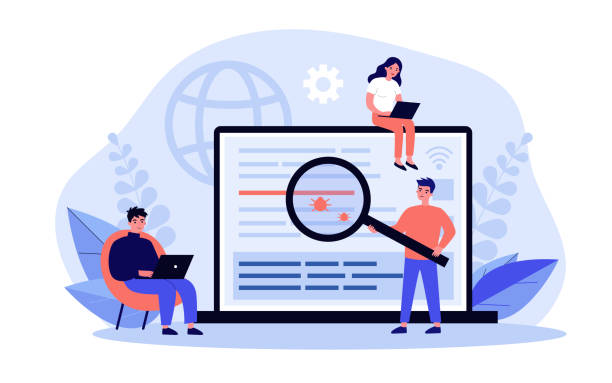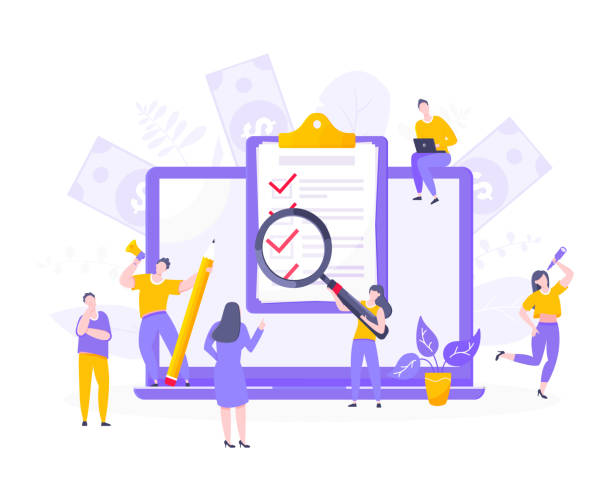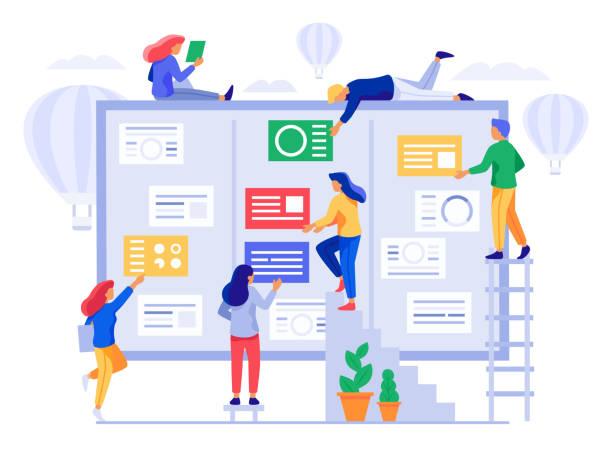The Importance of Business Globalization and the Role of Multilingual Website Design
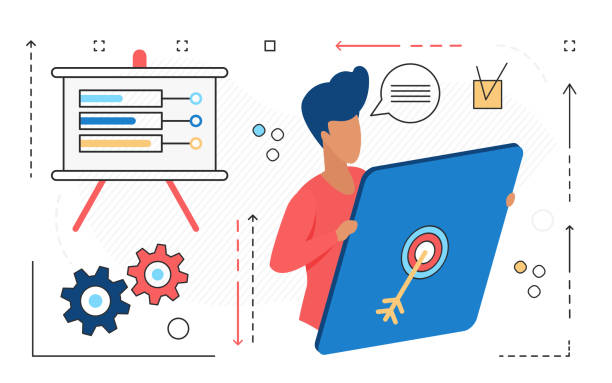
In today’s world, where geographical borders have faded and global communication has expanded more than ever, #business_globalization is no longer a luxury option, but a necessity.
Companies that rely solely on their #domestic_market will lose countless opportunities in the long run.
Reaching #international_audiences and establishing effective #cultural_communication with them is the key to sustainable growth and development.
In this regard, multilingual website design plays a pivotal role.
A multilingual website opens a gateway to new markets and allows you to convey your message in the native language of potential customers worldwide.
This action not only leads to increased sales and revenue but also enhances your brand’s international credibility.
Without access to various languages, you will miss out on a large segment of internet users who do not speak English.
This is a strategic move that enables you to familiarize yourself with different cultures and needs and localize your content.
In fact, your digital presence should be such that every user, regardless of their language and location, feels that your website was designed for them.
Did you know that poor online store design can drive away up to 70% of your potential customers? Rasaweb transforms your sales with professional and user-friendly e-commerce website designs.
✅ Significant increase in sales and revenue
✅ Full optimization for search engines and mobile
⚡ [Get free consultation from Rasaweb]
Numerous Advantages of Multilingual Websites for Your Business
![]()
Adopting multilingual website design brings significant advantages for any business aiming for international expansion and growth.
The first and perhaps most important advantage is increased market access.
By supporting multiple languages, you can attract a wider audience who were previously unable to interact with your website due to language barriers.
This means increased website traffic and, consequently, more sales opportunities.
The second advantage is improved SEO and search engine ranking.
Search engines rank multilingual websites for various keywords in different languages, which means greater visibility for you in international search results.
When users search in their native language, there is a higher probability that they will find your website.
The third advantage is increased credibility and trust.
A website that speaks to users in their native language conveys a sense of respect and attention, building trust.
This sense of closeness to customers shows that you value them.
Finally, there is also the gain of a significant competitive advantage.
In many industries, the number of fully multilingual websites is still limited, providing an excellent opportunity for you to surpass your competitors and establish your position as a global leader.
These advantages not only lead to sales but also significantly contribute to brand strengthening and fostering loyalty among international customers.
Technical Challenges and Solutions in Multilingual Website Design

When implementing multilingual website design, you will encounter numerous technical challenges that require a specialized and precise approach.
One of the most important challenges is managing URLs and website structure.
You must decide whether to use subdirectories (e.g., yoursite.com/fa), subdomains (e.g., fa.yoursite.com), or top-level domains (e.g., yoursite.ir) for each language.
Each method has its own advantages and disadvantages in terms of SEO and management.
The second challenge is the correct use of hreflang tags.
These tags inform search engines which versions of your pages are dedicated to which languages and geographical regions, which is crucial for preventing duplicate content and directing users to the correct language version.
Incorrect use of these tags can lead to serious SEO problems.
Another challenge is choosing a suitable Content Management System (CMS) that supports multilingual capabilities or has powerful plugins for this purpose.
WordPress with plugins like WPML or Polylang, and Drupal with its built-in modules, are popular choices.
Additionally, special attention must be paid to supporting various character sets and Right-to-Left (RTL) direction for languages like Persian or Arabic.
These challenges require deep technical knowledge but are solvable with proper planning and the use of specialists, leading to a successful multilingual website design.
The table below shows some key technical considerations:
| Technical Issue | Explanation and Importance | Solution/Tip |
|---|---|---|
| URL Structure | How web addresses are displayed for different languages (subfolder, subdomain, domain). Direct impact on SEO and management. |
Smart choice based on SEO goals and budget, use of logical structures. |
| Hreflang Tag | Informing search engines of the language and geographical region of pages. Preventing duplicate content. |
Accurate and correct implementation in page headers or sitemap. |
| RTL Support | Ability to correctly display right-to-left texts (e.g., Persian, Arabic, Hebrew). | Using appropriate CSS for RTL and UI design considering this feature. |
| CMS Selection | A content management system that adequately supports multilingual capabilities. | Choosing CMSs like WordPress (with WPML), Drupal, or specialized platforms. |
Effective Strategies for Content Translation and Localization
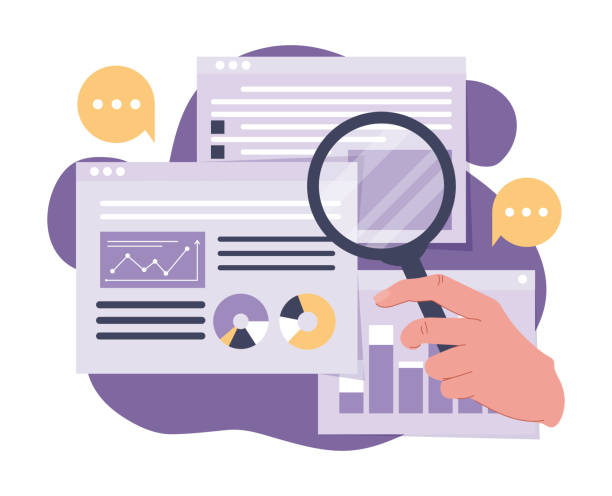
One of the most important pillars of success in multilingual website design is the quality of content translation and the localization approach.
Translation is not merely replacing words from one language to another; it’s about conveying meaning, tone, and even cultural concepts.
Using native and specialized translators in each field is of paramount importance.
Professional translators familiar with the culture and specific idioms of each language can produce content that is completely natural and understandable for the target audience.
This approach is vital, especially in specialized, legal, or marketing texts that require great precision.
Machine translation (like Google Translate), though fast, can never replace the quality and accuracy of human translation and often leads to meaningless sentences or egregious errors that harm your brand’s credibility.
In addition to translation, the concept of Localization is also very important.
Localization goes beyond translation and involves adapting content to the customs, values, currency, date formats, and even visual style of the target region.
For example, an image that has a positive meaning in one culture might cause misunderstanding in another.
Supporting local date and time formats, local currency, and even measurement systems (like metric or imperial) is essential for improving user experience.
Furthermore, ensuring that content is continuously updated across all languages is particularly important.
A comprehensive strategy for translation and localization ensures that your multilingual website penetrates not only the language but also the hearts and minds of international audiences.
Are you bothered by losing customers who visited your site to make a purchase?
Rasaweb is your specialized solution for having a successful online store.
✅ Significant increase in your online sales
✅ Building trust and professional branding with customers⚡ Get free consultation from Rasaweb specialists!
User Experience (UX) in Multilingual Websites and Its Importance

Designing a multilingual website goes beyond merely translating texts; special attention must be paid to User Experience (UX) in each language.
The user interface should be such that users can easily select their desired language. This is typically done through a dropdown menu, country flags, or clear language selection buttons in the website’s header or footer.
The location and clarity of this language switcher are very important.
Furthermore, attention must be paid to visual design and text formatting issues in different languages.
For example, languages like Persian or Arabic are written Right-to-Left (RTL), while most European languages are Left-to-Right (LTR).
This difference requires CSS adjustments and page layouts so that text is displayed correctly and visual elements are in their proper place.
Fonts must also be suitable for each language and provide the necessary readability.
Page loading speed is also crucial for a global user experience.
If your website loads slowly for users in remote areas, even the best translations will be useless.
Using Content Delivery Networks (CDNs) can help improve loading speed.
Finally, continuous testing and feedback from native users in each language will help you identify and resolve potential UX issues.
A multilingual website design with appropriate UX not only helps attract an audience but also retains them and converts visitors into loyal customers.
SEO Optimization for Search Engines on Multilingual Websites
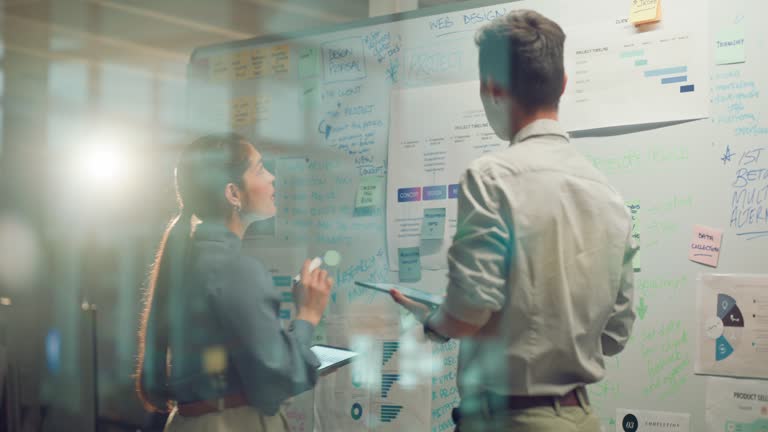
One of the most complex and vital aspects of multilingual website design is its Search Engine Optimization (SEO).
SEO in a multilingual environment goes beyond traditional SEO and includes specific considerations.
The first step is keyword research in each language. Keywords that are effective in one language might not be applicable or might have different meanings in another.
Using local keyword research tools and understanding the search intent of native users is essential.
The second important point is the correct use of hreflang tags. As previously mentioned, these tags help Google and other search engines present the correct language version of your website to users in different regions and prevent duplicate content issues.
Incorrect implementation of hreflang can lead to serious damage to SEO rankings.
URL structure is also important for multilingual SEO. Choosing between subdomains, subfolders, or top-level domains can affect how your site is crawled and indexed by search engines.
Each option has its own SEO advantages and disadvantages.
Additionally, building appropriate internal and external links for each language version of the website helps strengthen that language’s credibility.
Ensuring that translated content is also of high quality and naturally incorporates keywords is vital for SEO.
Continuous monitoring of SEO performance in each language and making necessary adjustments based on data is essential to ensure your website’s visibility in global markets.
Multilingual website design without attention to these SEO details will not reach its full potential for attracting a global audience.
Common Tools and Platforms for Multilingual Website Design

To implement an efficient multilingual website design, selecting the right tools and platforms is crucial.
Today, numerous options are available for building and managing multilingual websites, each with its own advantages and disadvantages.
Content Management Systems (CMS) like WordPress and Drupal are among the most popular choices.
WordPress, with plugins such as WPML (WordPress Multilingual Plugin) or Polylang, allows you to easily translate and manage your content in various languages.
WPML is one of the most powerful and comprehensive tools for WordPress, supporting the translation of posts, pages, categories, and even themes.
Drupal also natively offers strong multilingual capabilities and is suitable for large and complex projects.
E-commerce platforms like Shopify and Magento also provide built-in tools or extensions to support multiple languages, which are essential for multilingual online stores.
In addition to general CMSs, specialized Translation Management Systems (TMS) like MemoQ, Smartcat, or Phrase are available, simplifying the translation process for large projects and enabling collaboration among translators, editors, and project managers.
Cloud translation services are also rapidly growing, offering fast and automated translation of content segments, albeit with the quality considerations mentioned earlier.
The choice of platform and tools depends on your budget, project scale, and technical requirements.
Considering these tools during the planning phase of your multilingual website design is vital.
The table below provides a comparison of several common platforms:
| Platform | Multilingual Features | Advantages | Disadvantages |
|---|---|---|---|
| WordPress (with WPML/Polylang) | Powerful plugins for translating content, themes, and plugins. | High flexibility, large community, relatively easy to use. | Requires plugins, sometimes slow on large sites. |
| Drupal | Built-in multilingual capabilities and powerful modules. | High security, excellent scalability, suitable for complex projects. | Steep learning curve, higher development cost. |
| Shopify | Support for multiple languages for online stores (with apps). | Easy setup, suitable for e-commerce. | Customization limitations, reliance on third-party apps. |
| Magento | Strong multilingual capabilities for large and complex stores. | High flexibility, suitable for large organizations. | High complexity, requires extensive technical knowledge, high cost. |
Maintenance, Updates, and Development of Multilingual Websites

After completing the multilingual website design and launching it, your work is not over; rather, you enter a new and continuous phase of maintenance and updates.
Regular maintenance of multilingual websites involves several key aspects. Firstly, ensuring content is up-to-date across all languages is crucial.
If an item is updated in one language, its translated versions must also be promptly and accurately updated to avoid presenting inaccurate or outdated information to users.
This requires a robust content management system and an efficient translation workflow.
Secondly, monitoring the technical performance of the website in all languages is of paramount importance.
You must ensure that page loading speed, form functionality, and links are optimized in every language.
Technical issues in one language can disrupt the user experience for a large segment of your audience.
Thirdly, continuous monitoring of SEO and keyword rankings in each language is necessary to ensure the website’s visibility in target markets.
Changes in search engine algorithms or new competition can affect your rankings.
Additionally, paying attention to feedback from native users and implementing necessary adjustments based on it helps continuously improve the website.
Finally, developing and adding new languages over time can keep your website on a growth path.
This is an ongoing process that requires resource commitment and strategic planning to ensure your multilingual website design is always at peak performance and serves your business goals.
Did you know that 94% of a company’s first impression is related to its website design?
Rasaweb, by offering professional corporate website design services, helps you create the best first impression.
✅ Creating a professional and trustworthy image for your brand
✅ Easier attraction of potential customers and improved online positioning
⚡ Get free consultation for corporate website design
Common Mistakes in Multilingual Website Design and Implementation and How to Avoid Them

While multilingual website design holds immense potential for business growth, there are also common mistakes in its implementation that can render efforts fruitless.
One of the biggest mistakes, relying on machine translation without human editing, as previously mentioned, machine translation can never replace the accuracy, nuance, and cultural understanding of a human translator, often creating incomprehensible or even humorous texts that harm brand credibility.
Another mistake is neglecting multilingual SEO. Simply translating content does not mean visibility in search engines in that language.
Incorrect use of hreflang tags, lack of local keyword research, and insufficient technical optimization for each language lead to not achieving full SEO potential.
Another common error is failing to consider the unique User Experience (UX) of each language. Assuming that what works for one language will work for another is a mistake.
Attention must be paid to text direction (RTL/LTR), fonts, date and time formats, and even colors and images that carry different meanings in various cultures.
Lack of planning for continuous content maintenance and updates across all languages is also a major error.
Outdated or inconsistent content in different languages can confuse users and damage the website’s credibility.
Choosing an unsuitable platform that does not adequately support multilingualism can also be problematic.
To avoid these mistakes, meticulous planning, engagement of native specialists, investment in appropriate tools, and continuous testing and monitoring are of paramount importance.
A successful multilingual website design requires commitment and precision at all stages.
The Future of Multilingual Website Design and Emerging Trends

The digital world is constantly evolving, and multilingual website design is no exception.
Emerging trends are shaping the future of multilingual websites.
One of the most important trends is the significant advancements in Artificial Intelligence (AI) and Machine Learning in translation. Although machine translation cannot yet replace humans, AI-powered tools are providing higher quality translations by better understanding context and idioms.
These tools can act as assistants to human translators and drastically increase the speed of the translation process.
Another trend is the increasing importance of Voice Search in different languages. With the spread of voice assistants like Siri, Google Assistant, and Alexa, optimizing content for voice search in various languages has become a necessity, as users ask questions in their conversational and natural language.
Personalization will also play a more prominent role. Future websites will be able to provide highly personalized content based on language, geographical location, and even the user’s browsing history.
This elevates the user experience to a new level.
Augmented Reality (AR) and Virtual Reality (VR) may also be incorporated into multilingual interactions in the near future, especially in areas like education or e-commerce.
Finally, attention to emerging markets and less common languages will also increase.
Businesses seeking growth must move towards regions where there is still less competition.
These exciting trends indicate that multilingual website design is not just a current need, but a long-term investment in the digital future of businesses that will continuously integrate with new technologies.
Frequently Asked Questions
| Question | Answer |
|---|---|
| What is multilingual website design? | The process of building a website whose content is available to users in more than one language. |
| Why should I make my site multilingual? | To access a wider global audience, improve user experience for non-native speakers, and increase sales or engagement. |
| What are the methods for implementing a multilingual site? | Using subdomains, subdirectories, or URL parameters, or using different Top-Level Domains (TLDs) for each language. |
| Which method is better for SEO? | Generally, using subdirectories (e.g., example.com/fa/) is recommended for SEO, as they share the main domain’s authority. |
| What is the hreflang tag and what is its use? | The hreflang tag is an HTML attribute that helps search engines understand which version of a page is appropriate for a specific language or region. |
| Is machine translation sufficient for multilingual site content? | Usually no. For a good user experience and to maintain credibility, professional translation and content localization are essential. |
| What does Localization mean? | The process of adapting the content, design, and functionality of a site to the culture, language, currency, and other specific characteristics of a target region or country. |
| What is the importance of language selection in multilingual website design? | Users should be allowed to easily choose their desired language, usually through a clear button or menu in the site header. |
| What challenges exist in multilingual website design? | Managing content in different languages, maintaining design and UX consistency, multilingual SEO, and translation and maintenance costs. |
| What features should a suitable Content Management System (CMS) for a multilingual site have? | It should allow easy management of content in different languages, support multilingual URL structures, and have plugins related to translation and localization. |
And other advertising services from Rasaweb Advertising Agency
Smart Marketing Automation: An effective tool to improve SEO ranking with Google Ads management.
Smart Website Development: A creative platform to boost sales with intelligent data analysis.
Smart Data Analysis: Professional optimization for campaign management using attractive UI design.
Smart Social Media: Designed for businesses seeking to increase click-through rates through key page optimization.
Smart Advertorials: Professional optimization for campaign management using attractive UI design.
And over hundreds of other services in internet advertising, advertising consultation, and organizational solutions
Internet Advertising | Advertising Strategy | Advertorials
Resources
Importance of multilingual website design for international businesses
Multilingual website design: Challenges and solutions
How to design a multilingual website?
Advantages of having a multilingual website for SEO
? Are you ready to take your business to new heights in the digital world? Rasaweb Afarin Digital Marketing Agency, specializing in website design with modern user interfaces, professional SEO, and targeted advertising campaigns, is your key to success. With us, establish a powerful and lasting online presence.
📍 Tehran, Mirdamad Street, next to Bank Markazi, Southern Kazeroon Alley, Ramin Alley, No. 6

